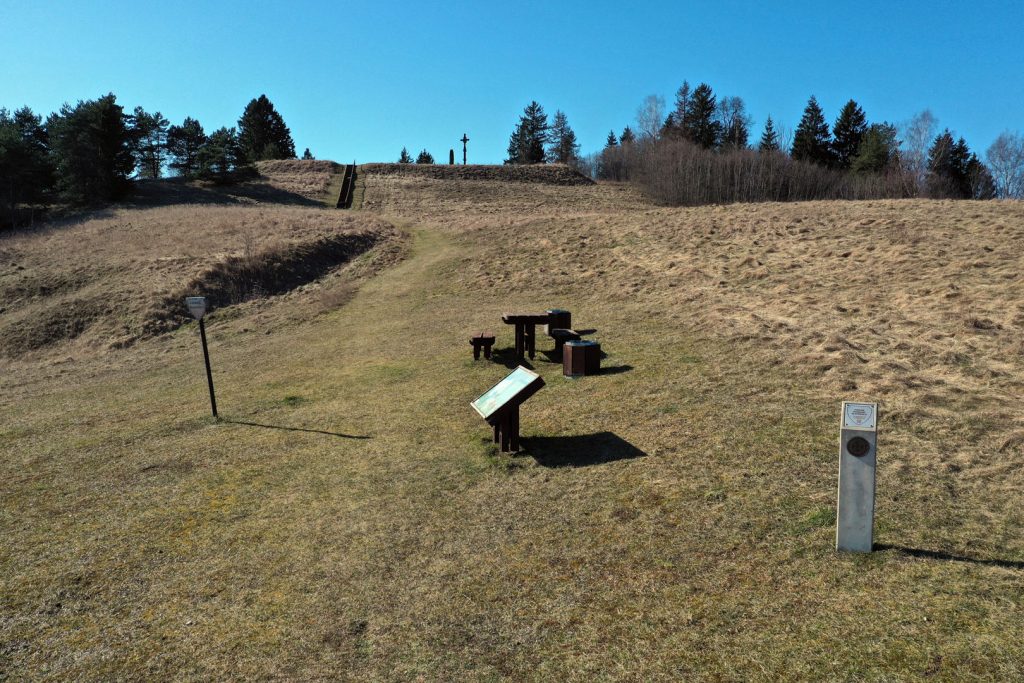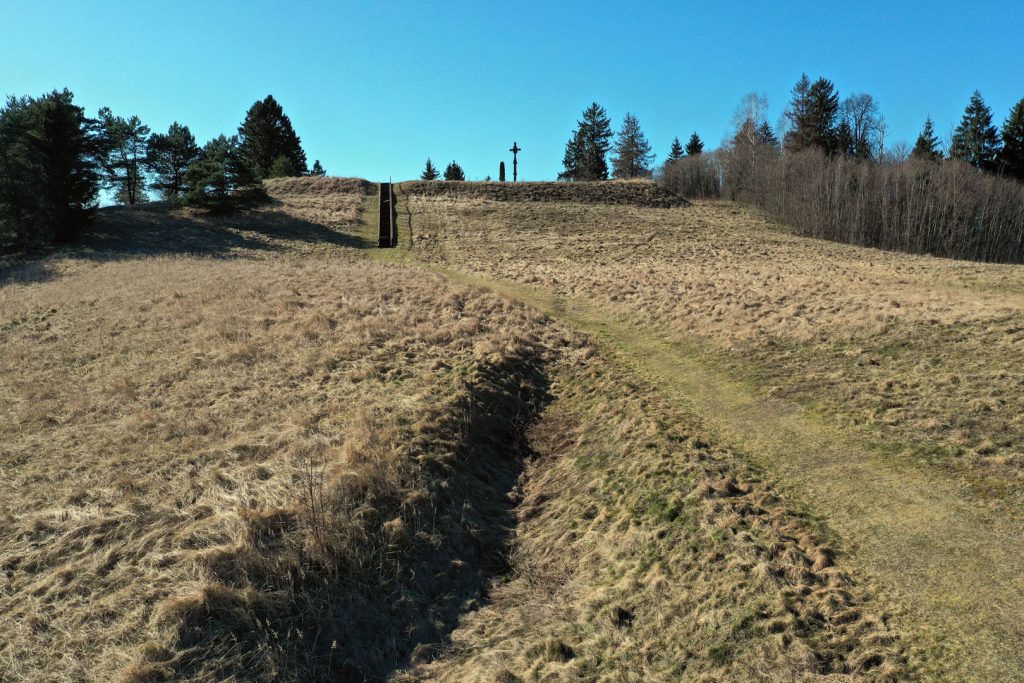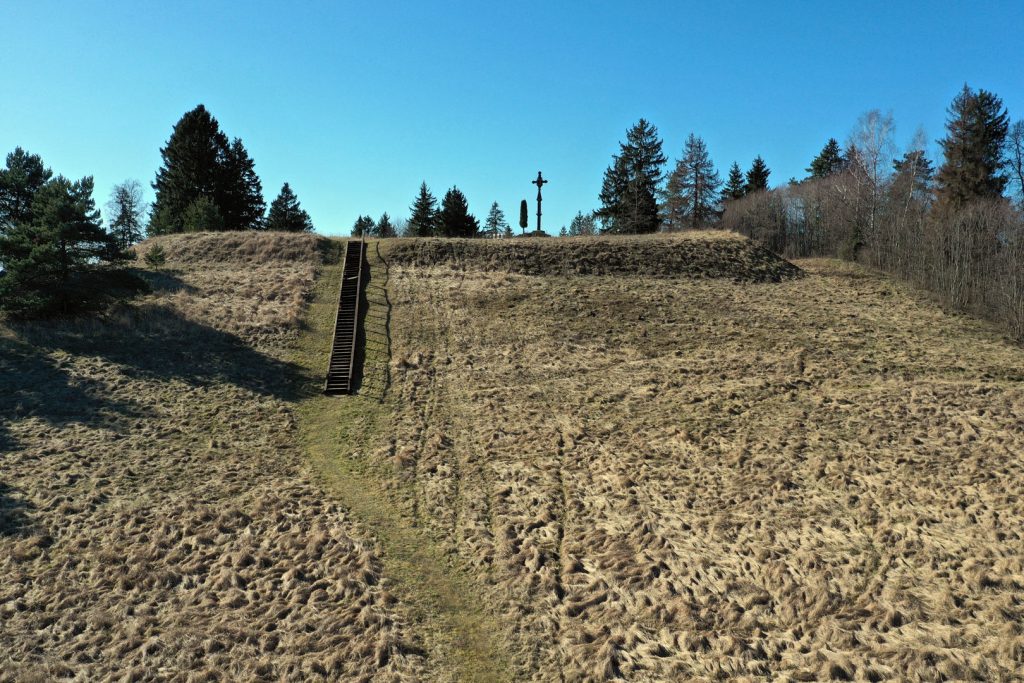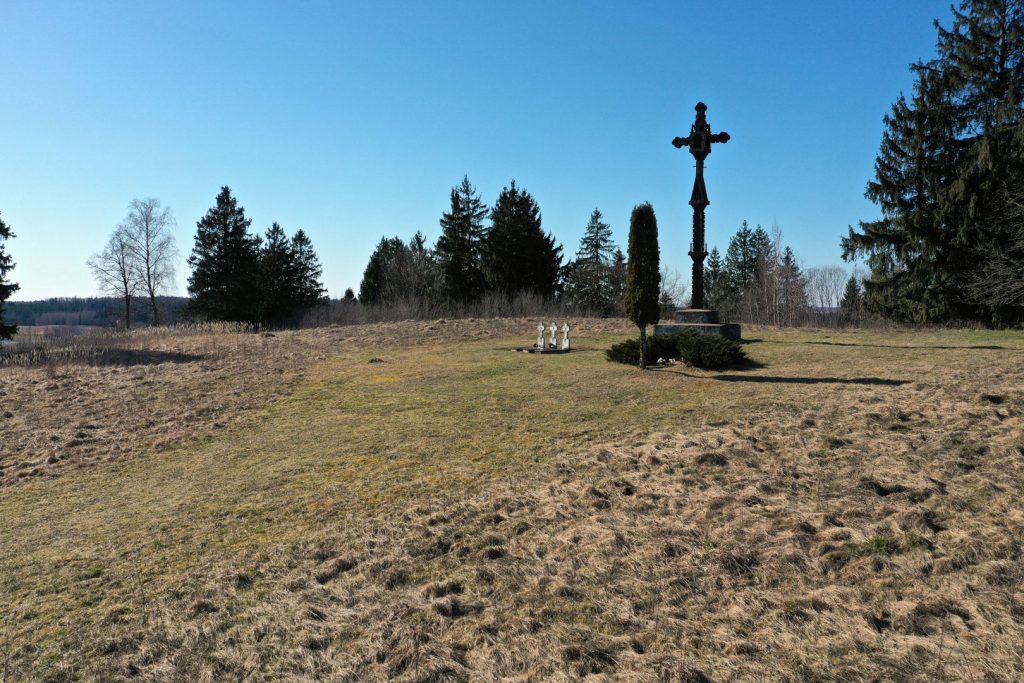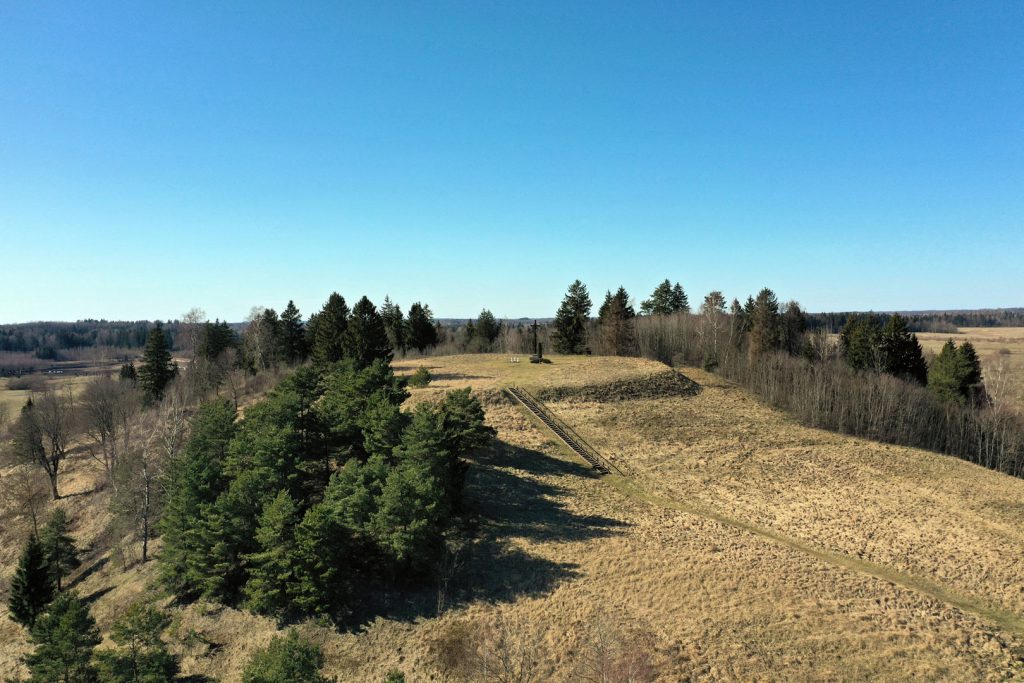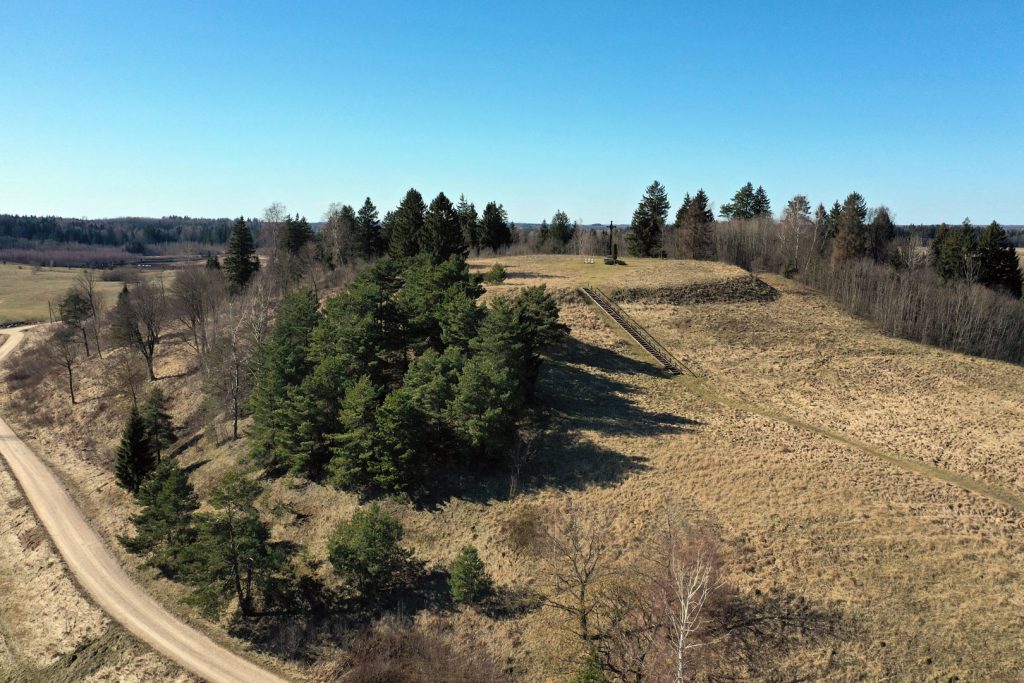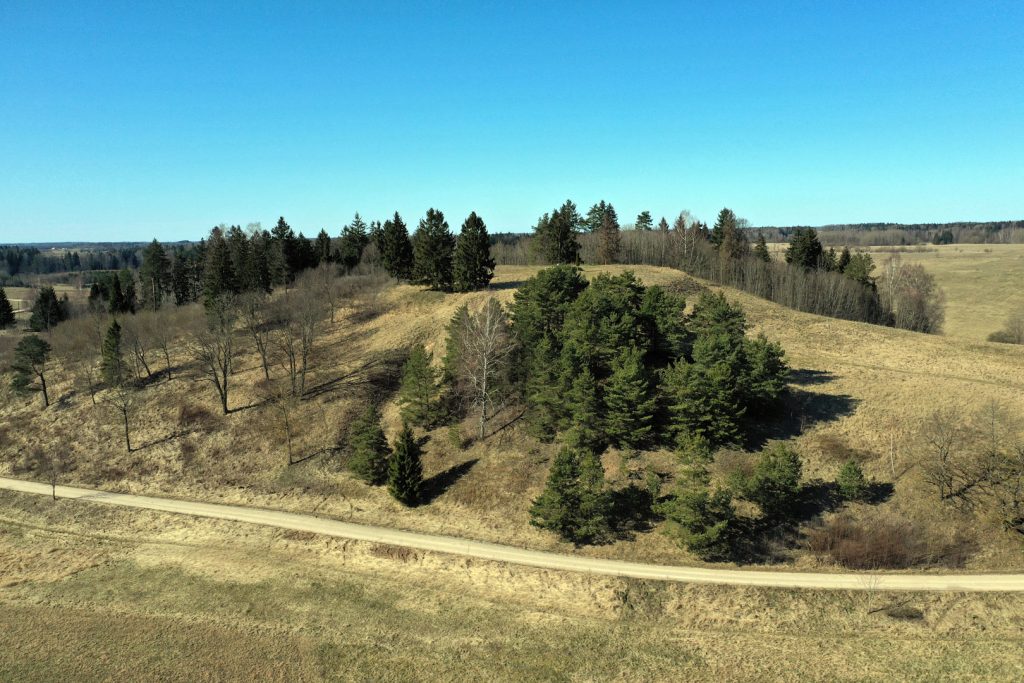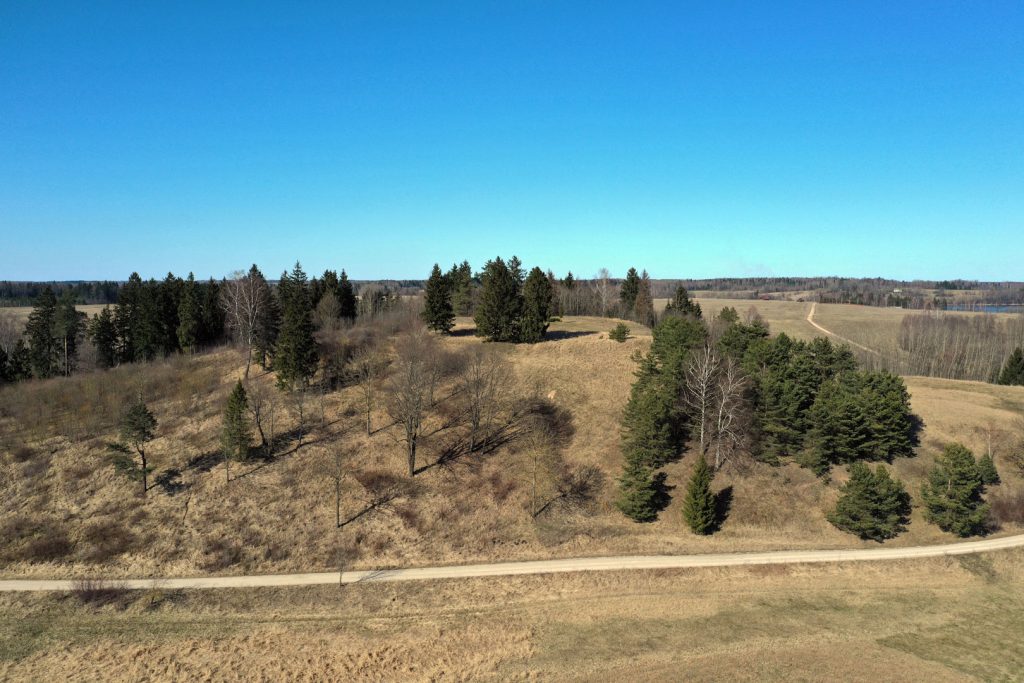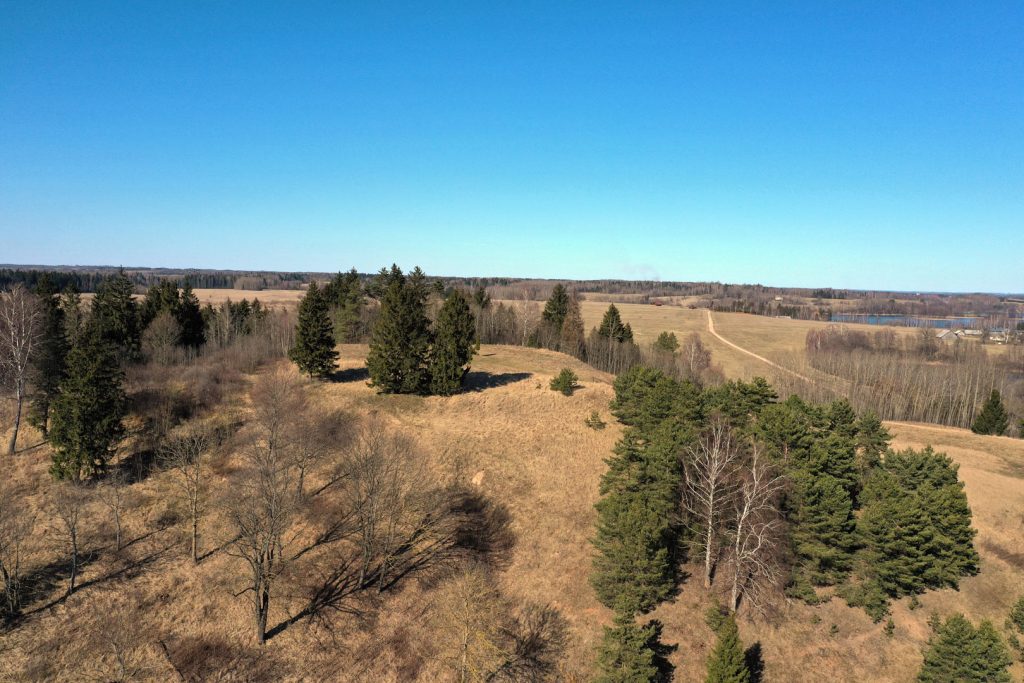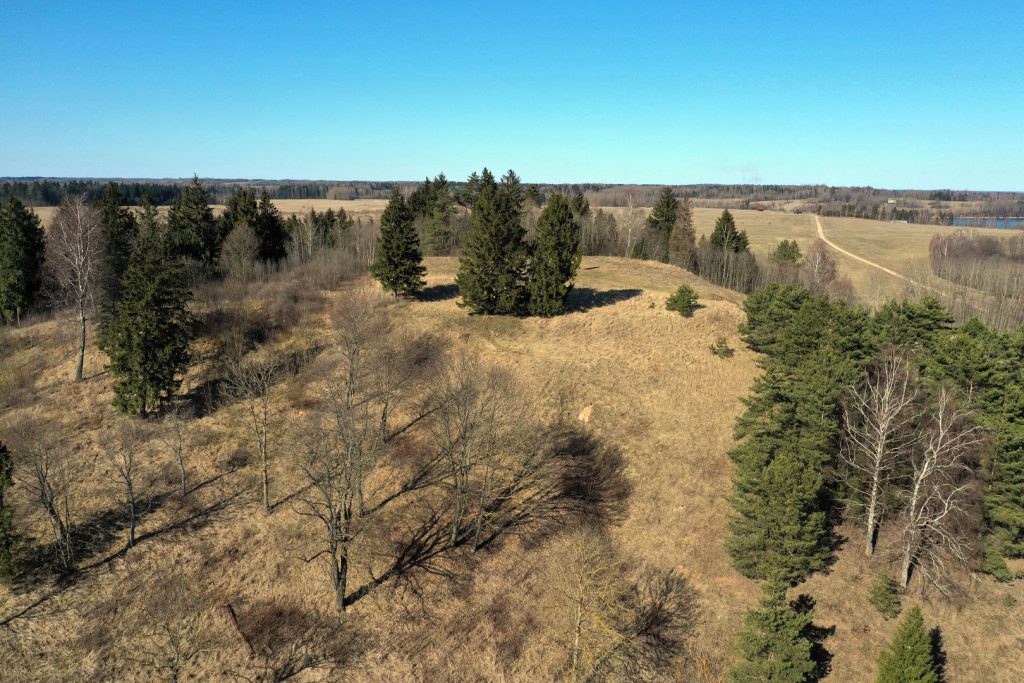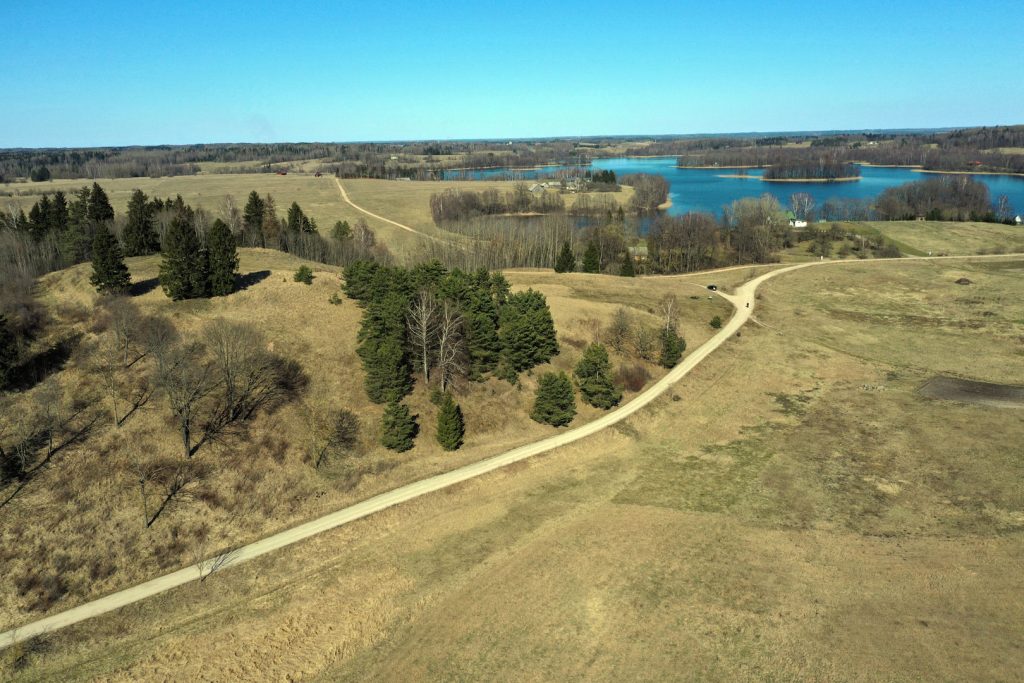Pakalniai hillfort
Pakalniai hillfort with a settlement (or Swedish Pile) is in the territory of Utena district municipality, north of Pakalniai, Leliūnai neighborhood. Accessible by the road Pakalniai–Leliūnai by going on 800m, it is on the right in the east, on the south-western bank of the lake Vidinkstas.
The hillfort was built on a separate massive hill on the south-western bank of the lake Vidinkstas. The site 48x41m. The slopes are steep, 25m high.
The hillfort is damaged by ploughing; in 1918 young people of the village erected an oak cross of 18m in height on the top of the hillfort with an inscription „God protect Lithuania“ (pulled down in 1963, rebuilt in 1989, fell down in 1998, rebuilt again in 1999); there are 4 partisan graves. The site and the eastern slope lie waste, the northern slope is overgrown with trees, some fir trees also grow on the edges of the site.
In 1836 during diggings a triangular piece of iron was found with inscriptions, also some small coins and brass snaffle.
In 1970 the hillfort was explored by the Institute of History. The finds are kept in the Lithuanian National Museum.
In 1989 Gintautas Zabiela explored the area of 16m² in the central part of the site, the place where the cross was being rebuilt, and discovered a cultural layer of about 35cm thick with pole holes, a hearth, brushed, smooth and rough pottery, animal bones.
In 1991 in the southern and eastern foothills of the hillfort where the road was being widened, the Institute of History (leader G. Zabiela) dug 20 holes (total area of 15m²), under 30–105cm of layers from the slopes found the cultural layer of the foot settlement. In the southern foot of the hillfort the settlement occupies the area of about 250x30m, which is on the height between the hillfort and wetland. The hillfort dates back to the I millennium BC – the beginning of the II millennium AD. The area of the monument territory 10 ha.
